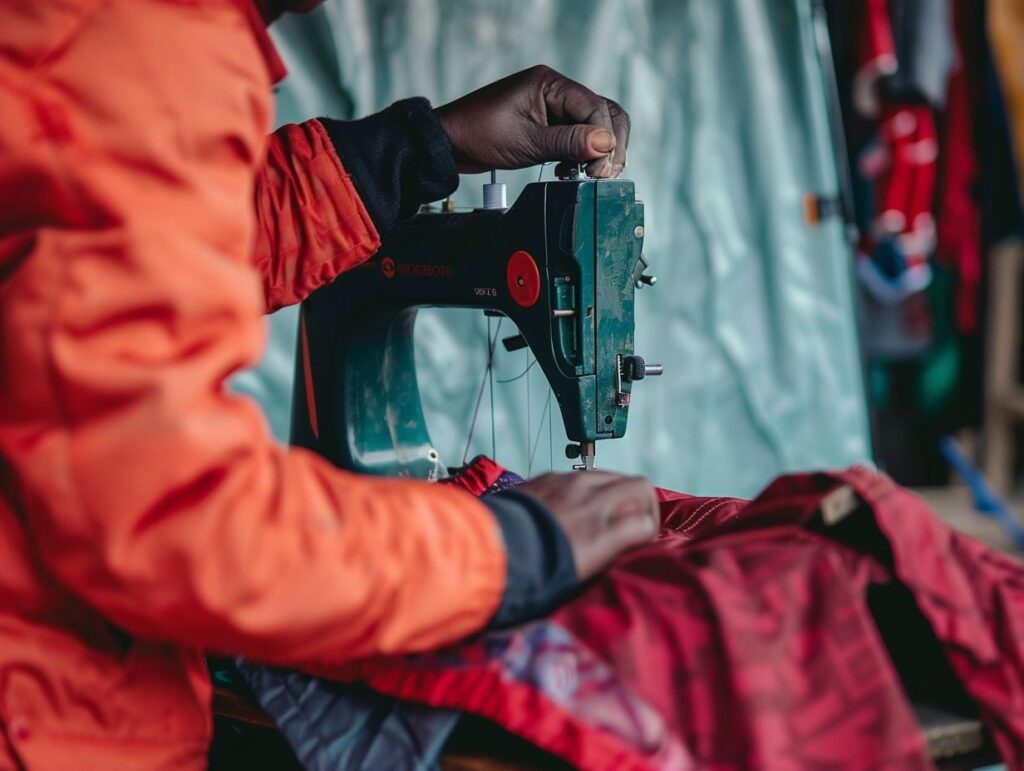Looking to add a personal touch to your camping experience? Making your own camping gear can save you money and allow you to customise your equipment to fit your specific needs.
In this article, we will discuss the essential tools and materials needed to get started, as well as step-by-step guides on making your own tent, sleeping bag, backpack, and campfire cooking set.
Additionally, we will provide tips on ensuring your gear is durable, cost-effective, and tailored to your preferences. Why not add a personal touch to your next outdoor adventure?
Key Takeaways:
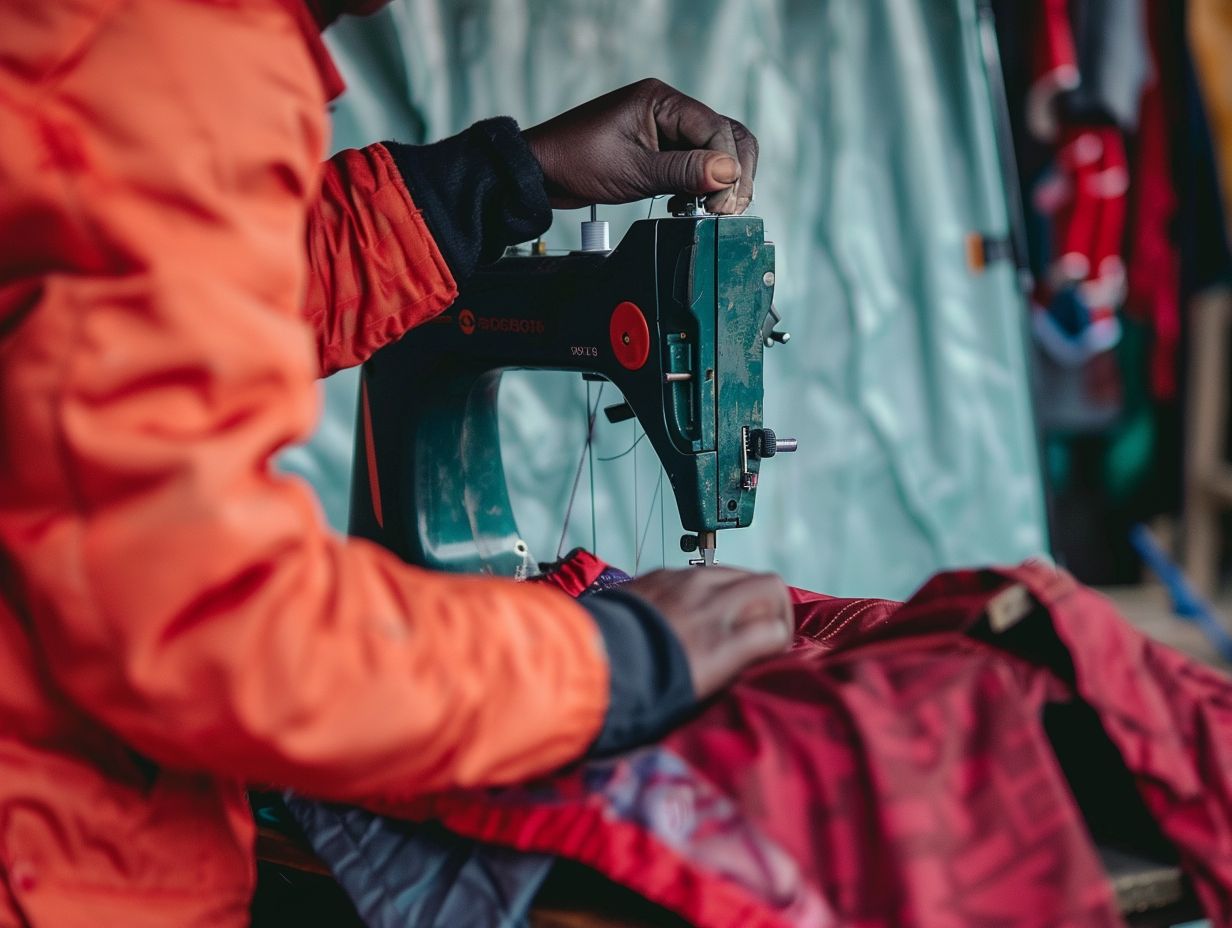
- Crafting your own camping gear allows for customisation and can save money.
- Essential tools for making camping gear include a sewing machine and basic sewing supplies.
- Popular DIY camping gear includes tents, sleeping bags, backpacks, and campfire cooking sets.
Tips for Making Your Own Camping Gear
When creating custom camping equipment, adhering to professional advice and implementing practical techniques can greatly improve the quality and usability of your creations. Valuable insights and guidance for DIY enthusiasts can be obtained from resources and tutorials provided on websites such as WhiteBlaze.net.
How to Ensure Your Gear is Durable and Safe?
For the assurance of durability and safety in homemade camping gear, it is essential to utilise high-quality materials, implement sturdy sewing techniques, and fortify stress points. This approach guarantees sustained and dependable performance when engaging in outdoor activities.
The selection of appropriate fabric holds paramount importance. It is recommended to choose robust and weather-resistant materials such as ripstop nylon or polyester. During the sewing process, the utilisation of strong, double-stitched seams is imperative to prevent tears and bolster overall resilience.
Critical areas such as corners, straps, and zippers should be reinforced with additional layers of fabric or webbing. Furthermore, the incorporation of quality hardware like durable buckles and D-rings enhances the security of the gear.
To maintain the longevity of the camping gear, it is advised to regularly inspect and address any signs of wear and tear promptly. By adhering to this diligent maintenance routine, the gear will remain in optimal condition, ensuring its reliability throughout your outdoor excursions.
How to Save Money on Materials?
Achieving cost savings on materials for DIY camping gear projects involves strategic purchasing tactics, such as taking advantage of sales, utilising vouchers, and exploring budget-friendly options offered by retailers like Hobby Lobby and Walmart.
Additionally, enrolling in loyalty programs or subscribing to newsletters at these establishments can yield exclusive discounts and advance notice of sales events. Browsing through clearance sections or bargain bins within these stores presents opportunities to secure excellent deals on essential camping gear items.
It is advisable to conduct online price comparisons prior to in-store acquisitions, as superior material deals may be available through virtual platforms. By employing a methodical and patient approach to shopping endeavors, individuals can fabricate superior DIY camping gear while maintaining financial prudence.
How to Customise Your Gear to Fit Your Needs?
Tailoring your equipment to meet your specific requirements involves meticulous planning, the selection of suitable materials tailored to your intended activities, and the integration of features such as additional pockets, adjustable straps, and tailored details throughout the manufacturing process.
When considering the design phase, it is essential to think about how you can enhance storage capacity, comfort, and agility for your outdoor excursions. The selection of appropriate materials is crucial; this may include strong textiles for tents and rucksacks, moisture-wicking fabrics for clothing, and lightweight yet durable options for cooking equipment.
To introduce personalised elements, one might consider adding clips for convenient item access, creating compartments for seamless organisation, or even adding reflective elements for improved safety.
Possible modifications include strengthening seams to improve durability, incorporating breathable mesh panels for better ventilation, or using insulating materials for cold-weather trips.
What Tools and Materials Do You Need?
To commence the production of custom camping equipment, it is imperative to procure a diverse array of tools and materials. This includes sourcing high-quality fabrics from reputable suppliers such as Ripstop by the Roll, Seattle Fabrics Inc., and Quest Outfitters.
Additionally, sewing tools and accessories can be acquired from retail outlets such as Walmart, Joann Fabrics, and Hobby Lobby.
What Tools Are Essential for Making Camping Gear?
Vital tools for producing camping gear encompass a dependable sewing machine, robust needles, fabric scissors, and measuring instruments, all of which are readily available at Home Depot and Lowes.
A dependable sewing machine is critical for crafting robust and precise seams on tents, sleeping bags, and backpacks. Robust needles are a necessity for stitching through thick outdoor materials without fracturing.
Fabric scissors guarantee meticulous, accurate cuts, averting fraying and ensuring a polished outcome. Measuring instruments, like tape measures and rulers, are essential for guaranteeing accurate dimensions and a properly fitted final product.
When procuring these tools, it is advisable to contemplate durability, user-friendliness, and compatibility with outdoor textiles. Home Depot and Lowes present an extensive array of options to cater to the requirements of every camper.
What Materials Are Best for Making Camping Gear?
The optimal materials for crafting camping gear are durable fabrics such as ripstop nylon and polyester, high-quality insulation materials like Climashield Apex, and specific types of down fill designed for warmth and comfort, all of which can be found at Ripstop by the Roll.
These materials present an ideal combination of durability, insulation, and comfort necessary for a variety of camping gear endeavors. Fabrics like ripstop nylon are renowned for their resistance to tearing, making them well-suited for applications like tents, tarps, and rucksacks.
Conversely, polyester boasts a lightweight nature and quick-drying properties, rendering it appropriate for clothing and sleeping gear.
In terms of insulation, Climashield Apex distinguishes itself for its capacity to deliver warmth even in damp conditions, making it a fitting choice for sleeping equipment and outerwear. The available options for down fill provide an exceptional warmth-to-weight ratio, establishing them as a favoured selection for sleeping bags and cold-weather jackets during camping excursions.
How to Make a Tent?
Crafting a personalised tent is a gratifying Make Your Own Gear (MYOG) endeavor that necessitates meticulous planning, utilization of premium materials, and proficiency in sewing. Instructional content available on platforms such as Instructables.com can provide comprehensive guidance, facilitating the creation of a durable shelter suitable for excursions along the Appalachian Trail.
What Are the Different Types of Tents You Can Make?
There exist various categories of tents that can be constructed, including ultralight backpacking tents, insulated winter tents, and large family tents. Each type necessitates distinct materials and considerations for insulation and fabric weight.
Ultralight backpacking tents are typically manufactured using lightweight fabrics such as silnylon or Dyneema. These materials offer exceptional durability while effectively minimising weight. The primary focus of these tents is on compactness and ease of portability, making them suitable for extended hiking excursions.
Conversely, insulated winter tents are constructed using heavier and more robust materials, such as ripstop nylon. These tents incorporate additional layers to enhance warmth and provide protection against severe weather conditions.
Family tents, tailored for comfort and spaciousness, are commonly crafted from durable polyester or canvas materials. The emphasis in these tents lies in providing ample room and weather resistance to accommodate extended stays in outdoor environments.
What Are the Steps to Making a Tent?
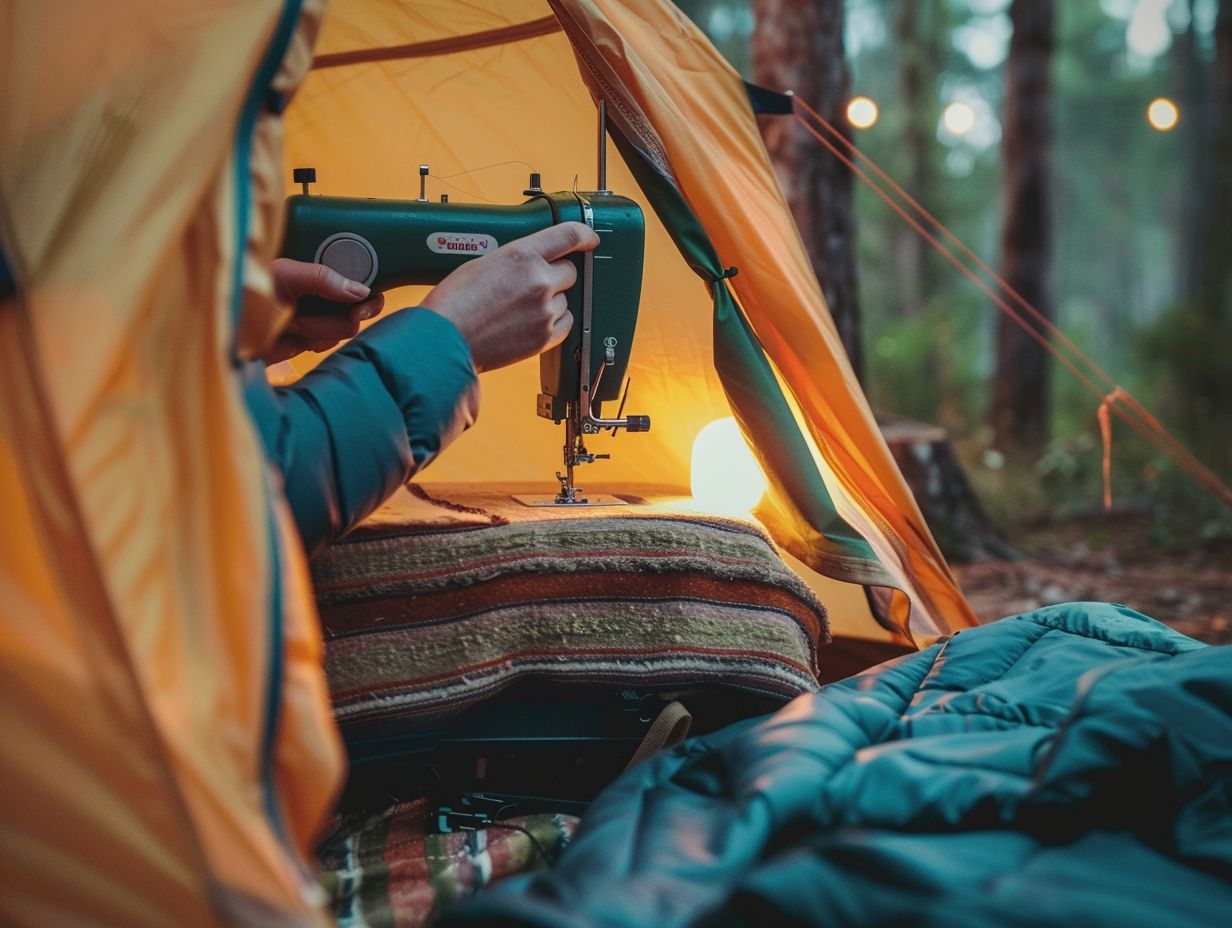
The process of constructing a tent encompasses several critical stages, beginning with the design of the layout, followed by the cutting of the fabric, sewing together of the panels, and the addition of features such as gear loops and zippers to enhance functionality.
Following the finalisation of the layout, the subsequent essential step involves meticulous sewing. Utilising a durable thread and executing precise stitching techniques are imperative to ensure the tent’s structural integrity remains uncompromised.
The incorporation of practical elements like gear loops within the tent’s interior can significantly elevate its functionality. These loops serve as convenient storage solutions for essential items such as lanterns, water bottles, or other gear, enabling easy access within the tent.
Maintaining a keen focus on every stitch and feature guarantees the production of a high-quality end product capable of withstanding various outdoor conditions with elegance.
How to Make a Sleeping Bag?
Manufacturing a personalised sleeping bag is a beneficial Make Your Own Gear (MYOG) endeavour that guarantees the acquisition of a tailored, cosy, and insulated sleeping solution for outdoor excursions. This procedure entails the meticulous selection of appropriate materials, such as insulation and down fill, along with employing precise sewing methodologies.
What Are the Different Types of Sleeping Bags You Can Make?
Various styles of sleeping bags can be crafted, including mummy bags, rectangular bags, and quilt-style bags. Each of these designs is tailored with specific considerations for insulation and fabric weight to cater to a range of outdoor conditions.
Mummy bags are particularly well-suited for cold weather camping, as their snug fit aids in retaining body heat. On the other hand, rectangular bags offer versatility and ample space for movement, making them suitable for camping in moderate climates.
Quilt-style bags, known for their lightweight design, offer customisable warmth by allowing them to be layered over or under other sleeping gear.
When choosing a sleeping bag, it is essential to take into account the type of insulation, whether down or synthetic, and the fabric weight. These factors are crucial in ensuring comfort and warmth while aligning with the intended use and climate conditions of the sleeping bag.
What Are the Steps to Making a Sleeping Bag?
The manufacturing process of a sleeping bag involves a series of meticulous steps, starting with the selection of an appropriate pattern. Once the pattern is chosen, the fabric must be cut with precision according to the pattern’s specifications to ensure a seamless fit of all components.
Following the cutting of the fabric pieces, the layers are meticulously sewn together, with careful consideration given to leaving openings for the insertion of insulation.
The choice of insulation, whether it be synthetic fill known for its durability and quick-drying properties, or down fill recognized for its exceptional warmth-to-weight ratio, plays a critical role in maintaining body heat and providing necessary warmth in cold conditions.
It is imperative to evenly distribute the insulation to prevent cold spots and ensure uniform warmth throughout the sleeping bag. This attention to detail guarantees that every part of the sleeping bag offers the desired cocoon-like comfort essential for a peaceful and restful night’s sleep.
How to Make a Backpack
Crafting a personalised rucksack presents itself as a commendable Make Your Own Gear (MYOG) endeavor for individuals with a penchant for outdoor pursuits seeking a bespoke and utilitarian pack aligned with their individual requirements.
Employing durable materials, proficient sewing capabilities, and thorough instructional resources sourced from platforms such as Reddit can facilitate the seamless execution of this venture.
What Are the Different Types of Backpacks You Can Make?
Various types of rucksacks can be crafted, such as daypacks, ultralight rucksacks, and multi-day packs. Each type requires distinct materials, fabric weights, and specific features like gear loops to enhance versatility.
- Daypacks are tailored for short trips or daily outings, typically using lighter fabrics to ensure increased comfort during extended wear periods.
- Conversely, ultralight rucksacks prioritise weight reduction through the use of specialised lightweight materials and minimalist designs, making them particularly suitable for thru-hiking or minimalist adventurers.
- Multi-day packs are constructed with robust fabrics and reinforced seams to withstand heavier loads and longer excursions. These packs often include additional features such as hydration reservoir sleeves and adjustable gear loops to facilitate the organisation of tools or equipment.
What Are the Steps to Making a Backpack?
The production of a rucksack involves multiple sequential steps, which include the selection of a suitable pattern, the meticulous cutting of materials, the precise sewing of panels, and the integration of straps and pockets to enhance functionality and comfort.
Upon finalising the pattern selection, the subsequent stage necessitates the accurate cutting of fabric pieces in accordance with specified dimensions to ensure a correct fit. Precision holds paramount importance during the sewing process to ensure the precise alignment of panels and the creation of a robust structure.
The attachment of durable straps becomes crucial for accommodating the weight of the rucksack, whereas the inclusion of pockets in various sizes aids in efficient organisation of belongings. Methodical assembly of all constituent elements guarantees that the end product not only possesses visual appeal but also serves practical and dependable purposes for daily use.
How to Make a Campfire Cooking Set
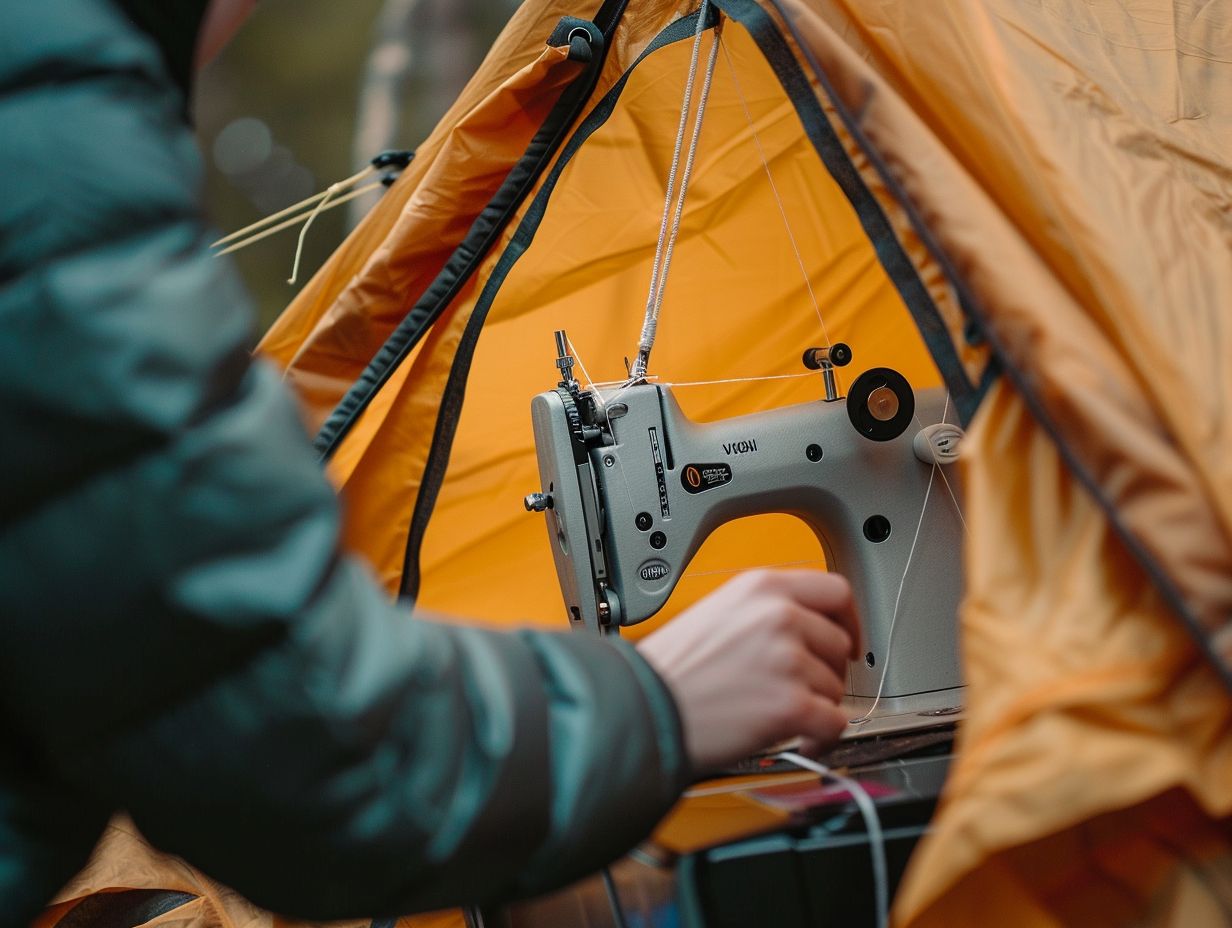
Crafting a personalised campfire cooking set is a pragmatic Make Your Own Gear (MYOG) endeavor that enriches the outdoor culinary experience by enabling customisation of the set according to individual requirements and preferences. Employing resilient materials and incorporating do-it-yourself techniques can yield a cooking set of exceptional functionality.
What Are the Different Types of Campfire Cooking Sets You Can Make?
Various types of campfire cooking sets that can be crafted include:
- Portable grill sets
- Compact cookware combinations
- Modular systems that offer customisation options for diverse cooking requirements in outdoor settings
Portable grill sets are well-suited for grilling meats and vegetables over an open flame, imparting a rich smoky flavour to outdoor dishes.
Compact cookware combinations, conversely, are adept at stewing soups, preparing stews, or boiling water for expedient meals during camping excursions.
Meanwhile, modular systems present adaptability through the ability to intermix different components like griddles, pot stands, and skewers to cater to a range of cooking techniques.
The selection of premium materials such as stainless steel or cast iron guarantees longevity, heat retention, and effortless upkeep. Through DIY customisation, individuals can tailor their campfire cooking set to align with their specific culinary preferences and accommodate varying outdoor cooking scenarios.
What Are the Steps to Making a Campfire Cooking Set?
The process of creating a campfire cooking set involves a series of structured steps. These steps include the selection of durable materials, design conceptualisation, component assembly, and rigorous testing to evaluate practicality and safety.
To commence the process, it is imperative to carefully choose materials capable of withstanding high temperatures and the harsh outdoor environment. Following this initial selection, the next step involves outlining the design of each component, taking into consideration crucial factors like stability and efficiency.
Once the design phase is complete and final, the subsequent step entails the gathering of all essential parts and tools necessary for the assembly process. During assembly, meticulous attention to detail is vital to ensure a secure and functional structure.
Post assembly, a critical aspect of the process involves testing the set by utilising it over a campfire. This testing phase serves to evaluate stability, heat distribution, and overall safety. Any necessary adjustments should be made promptly to guarantee a dependable and effective campfire cooking set.
Frequently Asked Questions
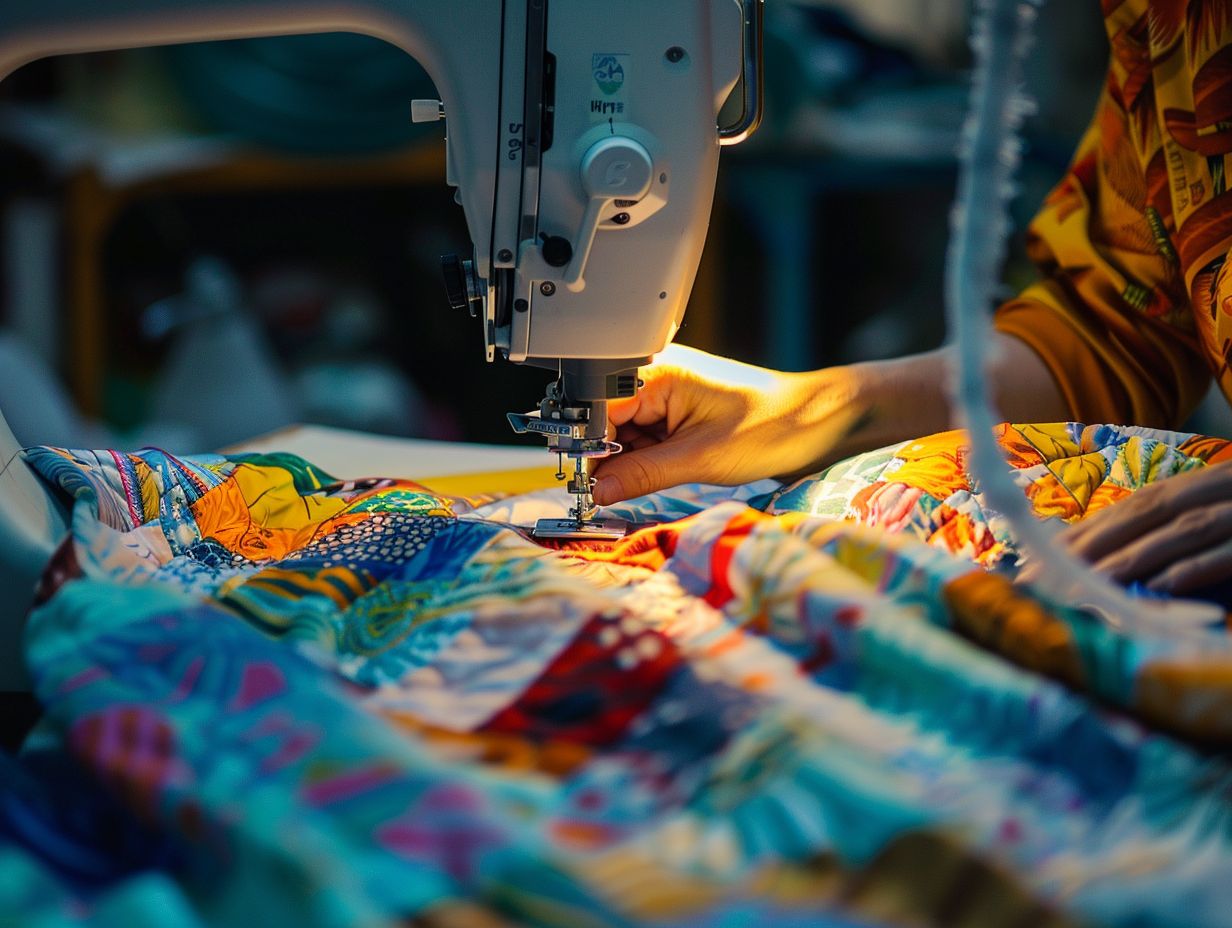
1. What are some essential tools and materials needed to make my own camping gear?
Some essential tools and materials needed to make your own camping gear include a sewing machine, fabric, thread, scissors, measuring tape, and a variety of camping gear patterns or instructions.
2. What are some simple camping gear items that I can easily make on my own?
Some simple camping gear items that you can easily make on your own include a tent, camping chair, sleeping bag, and a backpack. These items require basic sewing skills and can be customised to fit your specific needs.
3. Are there any online resources or tutorials that can help me make my own camping gear?
Yes, there are various online resources and tutorials available to help you make your own camping gear. You can find step-by-step guides, video tutorials, and even printable patterns for free on websites such as YouTube, Pinterest, and Instructables.
4. How can I ensure that my homemade camping gear is durable and long-lasting?
To ensure that your homemade camping gear is durable and long-lasting, it is important to use high-quality materials and follow a sturdy pattern or instructions. Reinforcing key areas and using heavy-duty thread can also increase the durability of your gear.
5. Can I save money by making my own camping gear instead of buying it?
Yes, making your own camping gear can save you money in the long run. While the initial cost of materials and tools may be higher, you will save money in the long term by not having to purchase expensive camping gear from retail stores.
6. What are some safety precautions I should take when making my own camping gear?
When making your own camping gear, it is important to take safety precautions such as wearing appropriate protective gear, using sharp tools carefully, and following instructions carefully. It is also important to test your gear before using it on a camping trip to ensure it is safe and functional.

